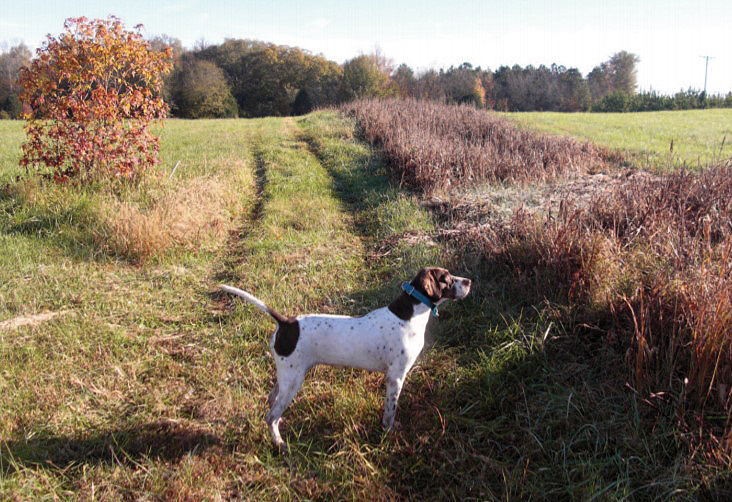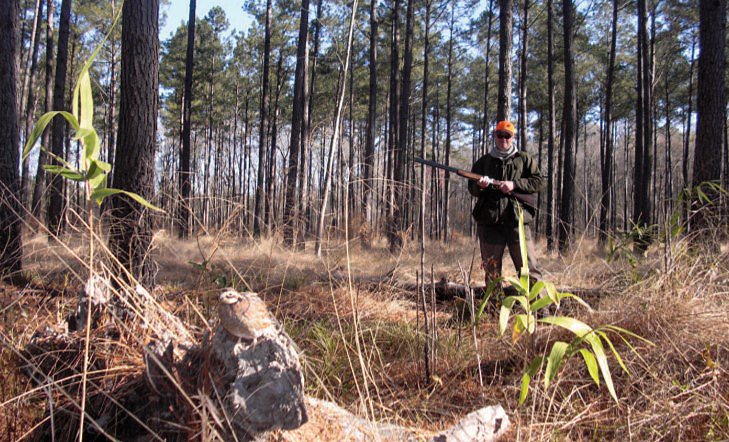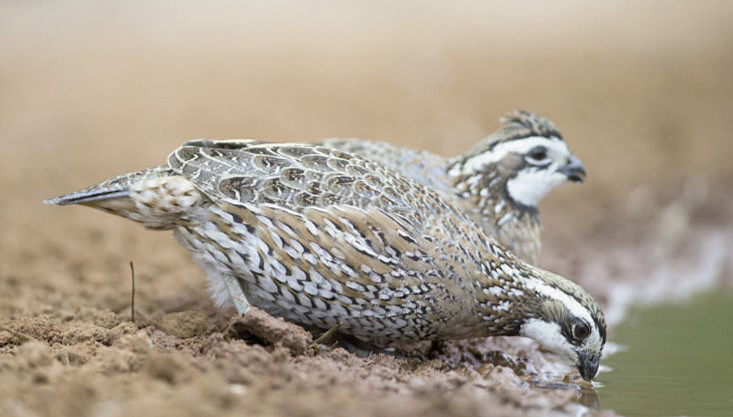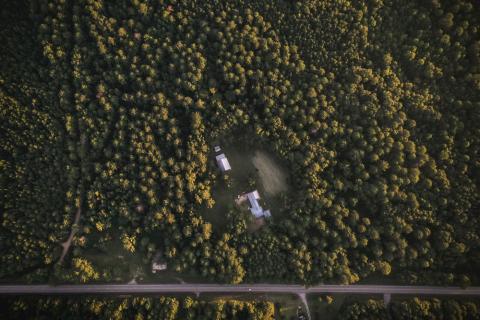Upland from the South
Jeff Dennis | Originally published in GameKeepers: Farming for Wildlife Magazine. To subscribe, click here.
Farming for wildlife is a hobby that can quickly turn into a passion, where each increase in intensity comes with a price. The majority of the acreage in the Southeast is privately held, and the majority of landowners keep the entire region in a blanket of pine plantations under heavy rotation. All wildlife species and small game, like quail in particular, benefit from early successional habitat. It’s not easy to dial back the popular practice of intensive timber management and then dial up a balancing act that benefits aesthetics and wildlife too, but it might be time to try.
For generations, saw-timber from pine trees along the coastal plain used to set the market when it came to top dollar prices for timber. Nothing stays the same forever and a slowly changing timber market was thrust into overdrive during the economic recession not quite a decade ago. With genetically enhanced seedlings and a white hot export market, it’s likely that whole tree chipping is a term that most are now familiar with. Pine tree poles remain the holdout as a potential top dollar timber product despite the evolution of the timber market.
The highest, best use for a tract of acreage has changed for some from strictly tree farming to put more emphasis on recreational value. Hunting is normally the driver for this pivot towards conservation, but water quality issues are now coming to the forefront, and the word is slowing getting out that a suite of songbirds and big game, including deer and turkeys, can all benefit from a triumvirate of management goals.
Acquiring and applying the skill set of a gamekeeper does not come without experience, without trial and error, and perhaps without ridicule from others. A young forester is quite likely to advise a landowner that they should clear-cut their acres and plant it back in pine trees, in hopes of conducting another harvest in the shortest possible rotation. Over the years, the same forester may modify their advice, but the immediate need of getting wood to the mill or chips into a boxcar will remain.

The iconic whistle of a bobwhite quail can be difficult to locate in the wild. Hearing that two-note call should remind landowners that coveys of quail are something that shouldn’t be missing from the landscape. The evening call of the Whippoorwill is also growing sparse, and sends the same message that ground-nesting bird species are dwindling from habitat loss.
As an upland game enthusiast, I can report having seen progress in regards to wild quail returning to the landscape. However, I would note that the recovery is slow in coming, but many gamekeepers’ management practices take a bit of time. Tree farmers understand this commitment to the long term and they can provide continuous habitat for wildlife by varying the age of their pine stands in the future.
Maintaining access roads, plowing firebreaks, treating sweet gum outbreaks with herbicide, and watching for pine beetles are all duties that tree farmers practice. Even if hunting quail is not a desired goal, the return of this native bird species to the woodlands will bring balance back to an ecosystem that tipped too heavily towards big game in the last few decades – even though many quail habitat improvements also benefit whitetails. The drumbeat of change is beating steady for bobwhite quail as different networks of land managers unify their message.
In 2014 the Milliken Forestry Company held a meeting in South Carolina on bobwhite quail habitat management. When a full-service land management company holds a meeting to discuss wildlife habitat on timber lands it is because of demand. The landowners want an answer to the question about whether their efforts to bring back bobwhites are worthwhile. The answer remains similar across all Southern states; it depends on each different property. In other words, it is still a leap of faith.
Groups like the National Bobwhite Conservation Initiative brings together 25 state wildlife agencies under one umbrella for the distinct purpose of restoring wild quail numbers to historical levels. Other groups like the Coalition of Prescribed Fire Council promotes the use of controlled burning, which just happens to be the most cost-effective way to manage land for early successional habitat. The Longleaf Alliance wants to restore longleaf pines to the Southeast, and their mission also happens to benefit wild quail.

None of these group efforts are in the mainstream today, and they inadvertently compete for being like-minded members, but their field trips and annual meetings hope to raise awareness into a groundswell of support one day. Mother Nature is out of the control of managers, but where and how a timber stand is cultivated is not. After the timber management decisions are made, then it takes a gamekeeper to detect and decipher the clues found along the way to bob white recovery.
Certified prescribed fire managers know to rotate controlled burning over the years, being careful not to burn the same tract each year. And they have learned not to burn too large a tract, or several adjacent tracts, thus leaving no cover for escape habitat. The preferred method of prescribed fire leaves behind a mosaic of habitat for wildlife, controls the hardwood competition, and produces an aesthetic look with an open understory.
Another organization that stresses research and science concerning bobwhite quail is the Tall Timbers Research Station in Northern Florida. Located jut across the state line from Thomasville, Georgia and the red hills landscape that is renowned for its quail hunting heritage. Using fire to control heavy cover in order to benefit ground-foraging bobwhites is a part of the Tall Timbers message which conducts regular outreach and education workshops all over the Carolinas, Georgia, Alabama and Florida.
Wild quail recovery appears to be working better on large-scale tracts of land, where a landscape-scale plan can be implemented. Predator control, supplemental feeding and watering are all a part of a “big budget approach” for quail habitat. And still almost all quail hunting today involves the use of pen-raised quail, whether from early release programs or by put and take methods. The goal is to get wild quail populations healthy again, but the heritage of the hunt is part of the catalyst that fuels that quest.
Quail habitat creation and maintenance can be achieved on smaller tracts of land, but it’s not as likely that landowners make a commitment to wildlife. It seems to take a special blend of appreciation of rural aesthetics, and a yearning to honor past hunting traditions for this balancing act between wood and wildlife to be embraced. But it’s still a “big picture problem” that bobwhite quail face in the Southeast, so the more the better when it comes to small private acreage participation. Quail hotspots can serve as the hub while smaller tracts may one day become the spur for quail recovery efforts to expand greatly.

The final cut or thinning on any tract of land will result in a clear-cut, and then it is time to site prep and replant. The message to gamekeepers is to prepare a management plan for the pines that includes herbicide treatment, prescribed fire and longer timber rotations with multiple thinning along the way. Stay away from high-grading during harvest. Instead, choose to leave the best trees and remove the rest.
“Heavy bird woods” work fine for quail hunting, but this model may not be widely known beyond bird dog enthusiasts. Errant shots do tend to remove some bark from a pine tree when a bobwhite is banking hard, making a dash for cover, but they are no worse for the wear. It may take 20 years or more of commitment to get the pine woods to this point, but being able to walk in the woodlands and identify the native plant species present due to this commitment to wildlife, can bring a sense of fulfillment for even the nonhunters in the family.
It’s important to educate others on how walking in the woods can be therapeutic, especially in colder weather when insects and reptiles are of low concern. Young pine plantations do offer bedding for whitetail deer, but they don’t offer walking access to people. While this thick woods stage can last for a decade or more, and is quite necessary, it can also be used as a possible motivation to keep the same woods with an open understory a little longer and later in the rotation for the sake of outdoor recreation and wildlife.
Having a good working knowledge of what kind of results you want comes from time spent in the field visiting other properties that are already further along in the process. It’s hard to imagine, but the challenges along the way that may cause others to question your bobwhite quail management efforts will dissipate over time. In fact, don’t be surprised if one day an observer remarks that those sure are some pretty woods. Quail managers know their woods are pleasing to the eye, they still provide income, and they are loaded with wildlife. Spread the good word.































